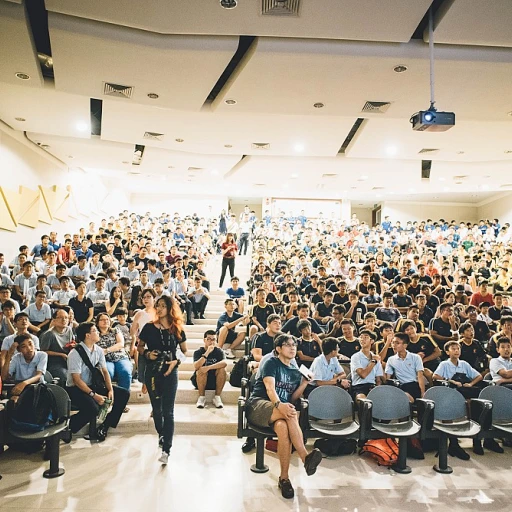
The Importance of a Hacker's Perspective
The Hacker's View: A Crucial Approach
Understanding the mindset of hackers is critical for devising robust cybersecurity strategies. It’s not simply about technical knowledge; it encompasses seeing vulnerabilities through a hacker's lens. In trouble, having the ability to think like a hacker can mean the difference between a secure network and a disastrous data breach.
Why is it important to adopt this perspective? A lot of small businesses underestimate the threats they face from cyber attacks, thinking they won't be targeted. However, cybercriminals often exploit cognitive biases that lead people to overlook security flaws in their systems. Ethical hackers, also known as white hat hackers, use their understanding of these biases to strengthen defenses, sharing valuable insights into potential weak spots that an organization might miss.
Ethical hacking is more than just penetration testing; it involves a comprehensive approach to cybersecurity. It requires constant updating of knowledge, staying ahead of emerging threats, and recognizing attempts at social engineering. In this way, businesses can mitigate the risks of cyber intrusions by adopting proactive security measures.
Common Techniques Used by Hackers
Unveiling Techniques: Understanding the Hacker Mindset
In the world of cybersecurity, possessing a good understanding of a hacker's mindset is essential. Ethical hackers and cybersecurity professionals often delve into this realm to anticipate potential threats and safeguard systems effectively. Let’s explore some of the common techniques employed by hackers to gain unauthorized access to valuable information.- Social Engineering: This is a favored technique among hackers. Through manipulation and deceit, they exploit human psychology and cognitive biases to gather confidential information. Hackers often impersonate trusted figures, such as IT support, to coerce users into divulging sensitive data.
- Phishing Attacks: A common form of social engineering, phishing involves sending deceptive emails that mimic reputable organizations. These emails lure users into clicking malicious links or downloading malware, compromising their computers and networks.
- Exploiting Software Vulnerabilities: Hackers utilize their skills to identify and exploit flaws within software and systems. By probing for vulnerabilities, they can breach defenses, access private data, and sometimes even control entire systems.
- Brute Force Attacks: This method involves attempting a large number of potential passwords or passphrases until the correct one is found. Such attacks are made possible due to the vast computational power at hackers' disposal, which can swiftly test numerous combinations.
Identifying Vulnerabilities in Your System
Uncovering System Weaknesses: “Hacker’s Guide” to System Security
Understanding the vulnerabilities in your system is a crucial step in strengthening your cybersecurity. Hackers often exploit these weaknesses to gain unauthorized access or steal data. By adopting a hacker mindset—thinking like a black hat while having the intentions of a white hat—you can turn the tables and put your system's security to the test. Cognitive biases can often prevent a comprehensive analysis of your system's vulnerabilities. Just as ethical hackers apply creative thinking and problem-solving tactics, you must also learn to question the assumptions that limit your perspective. It's about uncovering what others might overlook. One technique here is penetration testing, a valuable tool that ethical hackers use. This is where the ethical hacker could replicate a cyber attack to identify potential entry points before malicious hackers can exploit them. Employing these strategies, informed by reading Bruce Schneier's insightful works, can expose vulnerabilities you might not have considered. A good place to start is by assessing both your software and hardware for any outdated protocols or configurations that are known weak points. Small businesses, in particular, might ignore these areas, believing they are too insignificant for a cyber attack. But data shows that no entity is too small. Hackers often target these vulnerabilities first—an oversight that could have severe consequences. Building a diverse and informed security team will also provide a broader view of potential threats. Remember, cybersecurity is not just about the technical side but also about understanding how social engineering can bypass even the most secure systems. A lot of people don’t realize that social engineering tactics can be as effective as hacking into a computer system. For more in-depth strategies on strengthening your cybersecurity, explore our comprehensive guide on Understanding the Salary Differences Between Program Management and Product Management. This resource sheds light on leadership perspectives, contributing to a robust cybersecurity mindset that anticipates hacker strategies effectively.Developing a Proactive Security Strategy
Crafting a Robust Security Framework
To effectively safeguard your systems against cyber attacks, it's crucial to develop a proactive security strategy. This involves thinking like a hacker and anticipating potential threats before they occur. By adopting a hacker mindset, you can better understand the tactics used by hackers and prepare your defenses accordingly.
One of the key elements in a proactive strategy is regular penetration testing. This process involves ethical hackers, often referred to as white hat hackers, who attempt to breach your systems to identify vulnerabilities. By simulating real-world hacking scenarios, you can gain valuable insights into your system's weaknesses and address them before malicious hackers exploit them.
Building a Security-Conscious Team
Another important aspect of a proactive strategy is fostering a security-conscious culture within your organization. This means educating your team about the latest cybersecurity threats and the importance of maintaining good security practices. Regular training sessions can help your team stay informed about new hacking techniques and how to counteract them.
Social engineering is a common tactic used by hackers to manipulate people into divulging confidential information. By understanding these techniques, your team can be better prepared to recognize and resist such attempts. Encouraging a hacker mindset among your employees can help them think critically about potential threats and act swiftly to mitigate them.
Leveraging Technology and Resources
Incorporating advanced security technologies and resources is also essential for a proactive strategy. Tools like intrusion detection systems, firewalls, and antivirus software can help protect your data from unauthorized access. Additionally, staying informed about the latest cybersecurity trends and developments can provide you with the knowledge needed to stay ahead of hackers.
Reading books and articles by cybersecurity experts, such as Bruce Schneier, can offer valuable insights into the hacker mind and help you refine your security strategy. By continuously updating your knowledge and adapting to new threats, you can ensure that your systems remain secure in an ever-evolving cyber landscape.
Tools and Resources for Staying Ahead
Leveraging Tools and Resources to Stay Ahead of Cyber Threats
In the ever-evolving world of cybersecurity, staying ahead of cyber threats requires constant vigilance and the right set of tools and resources. Understanding the mindset of hackers is just the first step; the real challenge lies in deploying strategies and tools that can outsmart these threat actors. One essential tool for those in the security field is penetration testing—often conducted by ethical hackers to uncover vulnerabilities before malicious hackers can exploit them. This proactive approach allows organizations to see their systems from a hacker's perspective, enabling them to strengthen weak points effectively. For those aiming to improve their cybersecurity posture, a well-trained team is paramount. Security solutions often focus on technology, but people are a critical element. Training sessions on identifying phishing schemes and recognizing social engineering tactics, for instance, play a massive role in guarding against human errors that can lead to breaches. Moreover, tapping into valuable insights from security experts and thought leaders in the field, such as those shared by respected figures like Bruce Schneier, can offer guidance on current trends and future-proof strategies. Reading books, attending cybersecurity conferences, and participating in online forums are excellent ways to gain knowledge and stay updated on the latest cyber attacks and defenses. Many may not realize that smaller organizations are often primary targets for hackers, thinking they won't be noticed. However, small businesses, just like large corporations, need robust security frameworks. Practical tools such as updated firewalls, antivirus software, and intrusion detection systems provide a good defense line. In the United States and other parts of the world, regulatory frameworks also demand compliance, emphasizing the importance of a robust privacy policy to protect user data and rights reserved. This includes ensuring that ethical standards are upheld, respecting privacy, and maintaining transparency in cybersecurity practices. Developing a preventive mindset, continuously educating oneself, and implementing robust security measures are crucial steps. Cybersecurity requires not just a toolset but also a mindset shift. Adopting the hacker mind approach helps to anticipate and withstand cyber threats effectively, ensuring the integrity and confidentiality of systems and data.Case Studies: Learning from Real-World Incidents
Learning From Real-World Incidents
In the world of cybersecurity, real-world incidents provide valuable insights into the hacker mindset. By analyzing these events, whether they are high-profile breaches or small-scale cyber attacks, security teams can better understand the tactics, techniques, and procedures ethical hackers use. This understanding is crucial for developing a proactive security strategy and improving systems.
One case that stands out is a coordinated attack on several small businesses across the United States. These businesses, despite having good cybersecurity measures in place, fell victim to social engineering—a common technique highlighted previously. The hackers exploited cognitive biases, which made even the most vigilant teams vulnerable.
In another instance, a large company's data was compromised due to an oversight in penetration testing. It highlights the importance of regular assessments and how overconfidence in systems can lead to a false sense of security. People often forget that what may seem like a minor security flaw can quickly turn into a gateway for hackers aiming to access valuable data.
White hat hackers provide numerous beneficial lessons through ethical hacking. By simulating hacking scenarios, they help organizations identify vulnerabilities before malicious actors do. As one reads further into cybersecurity literature, like past influential writings by experts in the field, it becomes evident that adopting a hacker mind and continually evolving security practices is paramount. Bruce Schneier’s discussions underline such points, shedding light on the mindset necessary to combat cyber threats effectively.
Real-world cases serve as a compelling reminder of the need to stay one step ahead in cybersecurity. Don’t just react; be proactive in understanding what things make a system attractive to hackers. Let's keep the good work going in crafting robust defenses for the digital age.












